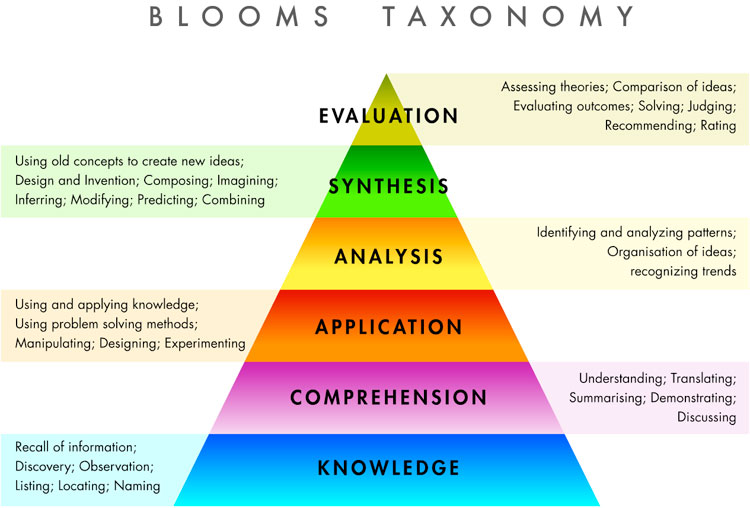Bloom's Taxonomy focuses on a higher level of thinking. Students often fall short of the higher order thinking presented in Bloom's Taxonomy. Dr. Smirnova presented a ton of links, videos and examples of Bloom's Taxonomy to explore. These links were very helpful in developing my understanding of higher order thinking.
After reading about Bloom's Taxonomy, I learned that posing questions to activate student knowledge and thinking during a lesson is crucial. There are six categories:
1. Knowledge
2. Comprehension
3. Application
4. Analysis
5. Synthesis
6. Evaluation
Words and questions used during each category when teaching is necessary to influencing students thinking towards a higher level. Activating prior knowledge, understanding information, applying prior knowledge to the new information, breaking down the new information into understandable sections, implementing and deciding information based on the lesson are all components of Bloom's Taxonomy. Teachers can pose questions at each category within the lesson to influence higher order thinking. Dr. Smirnova posted a link to a great site that provides example questions to pose. The questions are simple and seem easy to implant within a lesson.
The image below nicely organizes and quickly explains Bloom's Taxonomy:

Bloom's Taxonomy is crucial to the success of our students. It is fairy simple to include into a lesson and could be used as a rough lesson outline. Influencing higher level thinking in students goes beyond what most teachers do and is now becoming more required due to state tests and mandates. I will definitely try to use some of the suggested questions and follow Bloom's Taxonomy in my lesson plans and teaching.
xox,
Christie
No comments:
Post a Comment